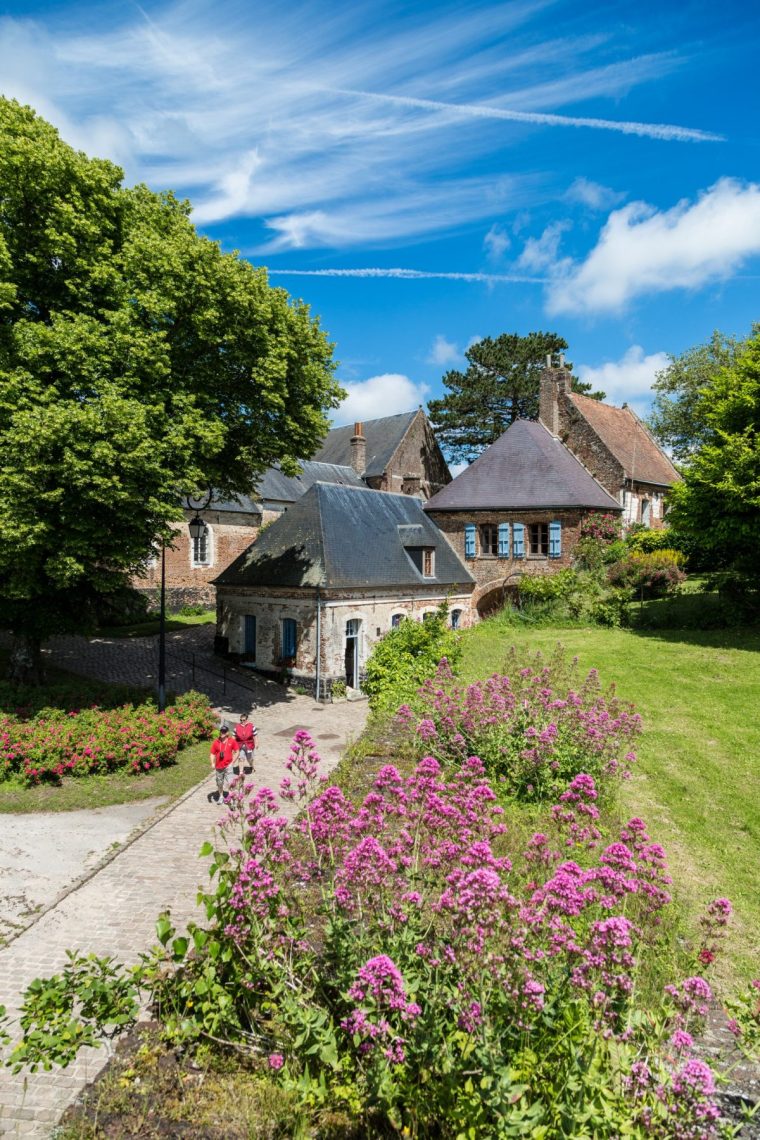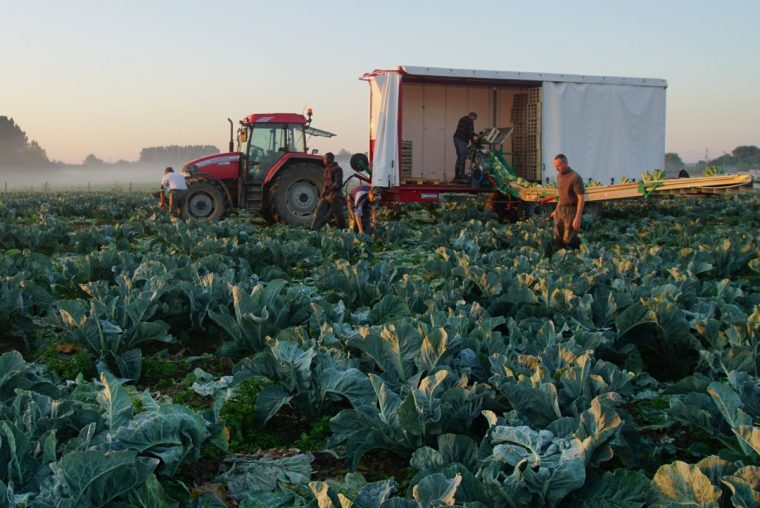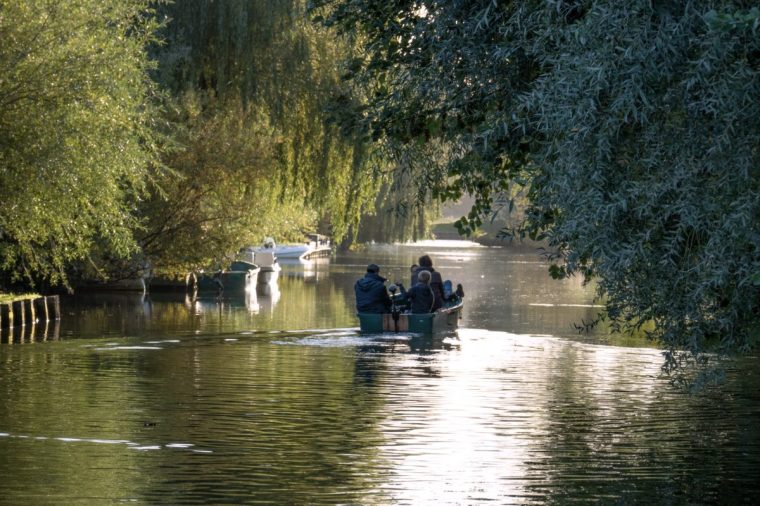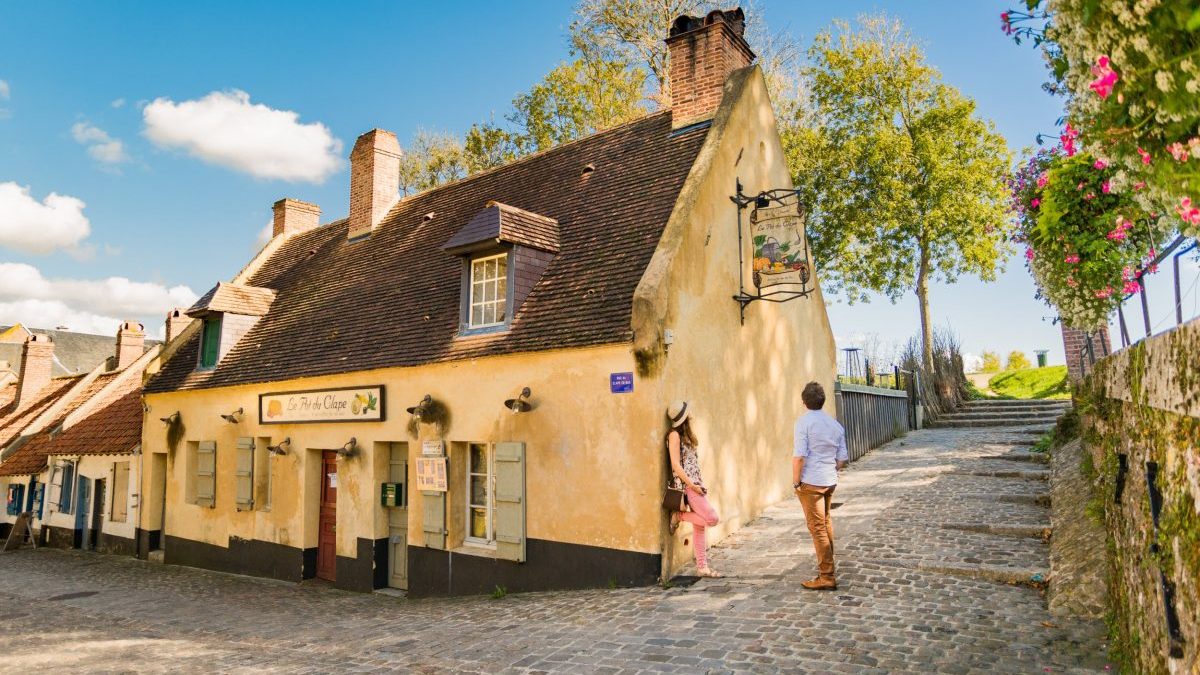Just a short drive from Calais lies an overlooked region of quiet towns, passionate artisans and impressive restaurants
Driving off the ferry, I feel smug. No long drive for me, I am staying local. Hauts-de-France may not have the heat-shimmered allure of Provence or Dordogne, but it is quintessentially French, nonetheless, and much less busy. “Don’t write about that,” pleaded Stuart, a fellow ferry passenger, “it’s the best-kept secret.”
Thirty minutes from Calais and just north of Boulogne, I am in the village of Wierre-Effroy noting the patisserie, the brasserie and the Fromagerie les Frères Bernard. While agonising over the choice of cheese, shoppers can watch the cheese makers at work. One of the Bernard brothers, Joachim, shows me around.
I leave clutching a creamy cheese with a fenugreek-scented, floral rind and a wedge of well-aged mimolette. Nearby, the brothers’ former home has been transformed into the Ferme du Vent hotel with a restaurant that celebrates local produce. Secluded among the fields and hedgerow, I am quickly relaxed by the stillness of rural France.
Back on the coast, I stop at the seafood restaurant La Marie Galante in Audresselles to eat razor clams smothered in buttery garlic breadcrumbs and the local speciality, crispy grey shrimp croquettes. I cannot resist ordering a café gourmand, that sneaky way of trying four miniature desserts in the name of coffee.
To walk it off, I take a path through the dunes to access the vast, white, sandy beach on the aptly named Opal Coast.
 Montreuil-sur-Mer is 20 miles from the sea (Photo: Benoit Bremer)
Montreuil-sur-Mer is 20 miles from the sea (Photo: Benoit Bremer)
Less than an hour’s drive south in Montreuil-sur-Mer I sleep amid antiques in a four-poster bed in the eponymous château.
Replete with a cracking croissant, I join Jean-Maris from the tourist office to wander around the town’s cobbled streets and ramparts, from where we can see the sea, 20 miles away (a now-silted-up estuary once made the town navigable from the coast).
He points out a café here, a bistro there and tells me about starring in an annual production of Victor Hugo’s Les Misérables – set within the grounds of the castle.
Montreuil is also a gourmet destination. At Le Patio I encounter those flavoursome grey shrimp again, this time encased in a savoury mille-feuilles.
At L’Anecdote, white asparagus comes wrapped in a white linen napkin, accompanied by wild garlic mousseline. It is the small details, be it the crunch and pillow of the bread, the stylish cutlery, or the provision of sun hats, that elevate the French dining experience.
That a two-course lunch of this calibre costs £25 and three courses the evening before at Le Patio was £37, is astonishing.
Half an hour away is Hesdin, where the river flows under a flower-clad bridge and there seems to be a boulangerie at every turn. I meet up with Julie Barbosa at La Cave de Lilie, a female-run wine shop with offerings from £4 to “many hundreds”. It also offers wedding tastings and open days for the Beaujolais Nouveau in November.
On to Saint-Omer, “the town of yellow bricks”, where the Flemish and French history (the Belgian border is 19 miles away) is documented through its fine buildings. Today it is a centre for culture and heritage with interactive museums, a glorious cathedral and yet more culinary delights.
 Cabbages harvested in the Audomarois marshes (Photo: Frederic Legris/Hauts-de-France)
Cabbages harvested in the Audomarois marshes (Photo: Frederic Legris/Hauts-de-France)
Saint-Omer is surrounded by marshes – drained and farmed as market gardens for centuries, this watery landscape was central to the town’s prosperity. However, only a few of these gardens remain with most of the Audomarois marshland designated as a Unesco biosphere, sheltering more than 200 species of birds.
A canal tour in a traditional, wooden boat reveals the well-tended gardens that have replaced the smallholdings. Between willows and walnut trees, I am entranced by rows of the marsh’s unique little cauliflowers, blue leeks and emerging legumes.
“I am passionate about my land,” Loéc, an organic gardener, tells me, among his seedlings and vivid flowers. I buy some of his intensely flavoured little strawberries in the market. I have never tasted better.
La Maison du Marais dissects the landscape through museum exhibits, but better still is the café, where I lunch on a crisp bowl of locally grown salad. Afterwards, I enjoy a gentle stroll along accessible paths back through the waterways passing a windmill en route.
 Taking a boat through the waterways of St Omer’s marshes (Photo: Hauts-de-France)
Taking a boat through the waterways of St Omer’s marshes (Photo: Hauts-de-France)
The final town on this arc around Calais is hilltop Cassel. Road names reflect Flemish connections, as do restaurant menus – curling sausages, lashings of stewed apple and, naturally, chips with mayonnaise are the special at the Estaminet Kasteelhof, washed down by hoppy beer.
Touring the 3 Monts Brewery underlines the link between topography, history and produce as does the exhibition of Brueghel’s paintings at the Flanders Museum. The galleries reveal a flamboyance of food and flowers in a landscape I now recognise.
It is a short drive along empty roads back to Calais. Over just four days, I have indulged in the very best of French food and culture right here, on our doorstep. I leave feeling just as smug – though more content – as when I started.
Getting there
The writer travelled with Irish Ferries, which has 10 crossings from Dover to Calais daily. The lowest return fare is £108 for a short break.Where to stay
Château de Montreuil has doubles from €115 (£137).
Mercure St Omer has doubles from €117 (£139).More information
hautsdefrancetourism.com
visitpasdecalais.com
